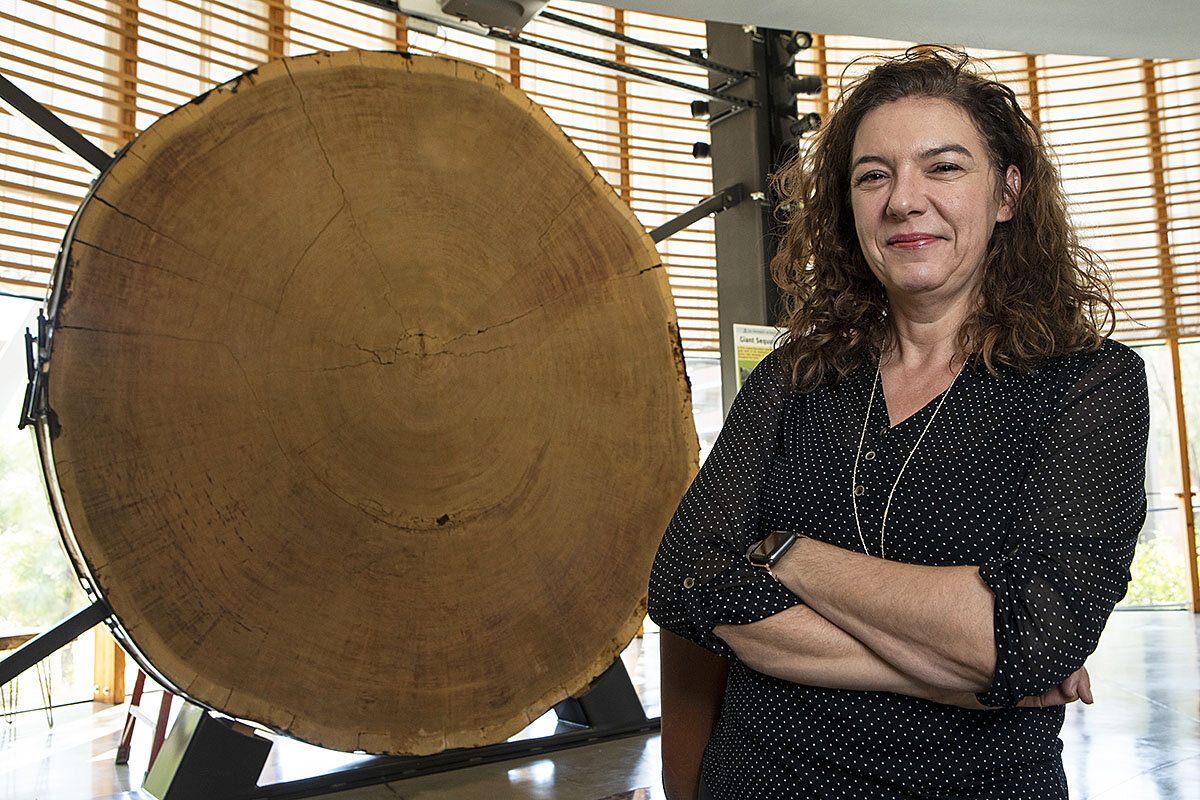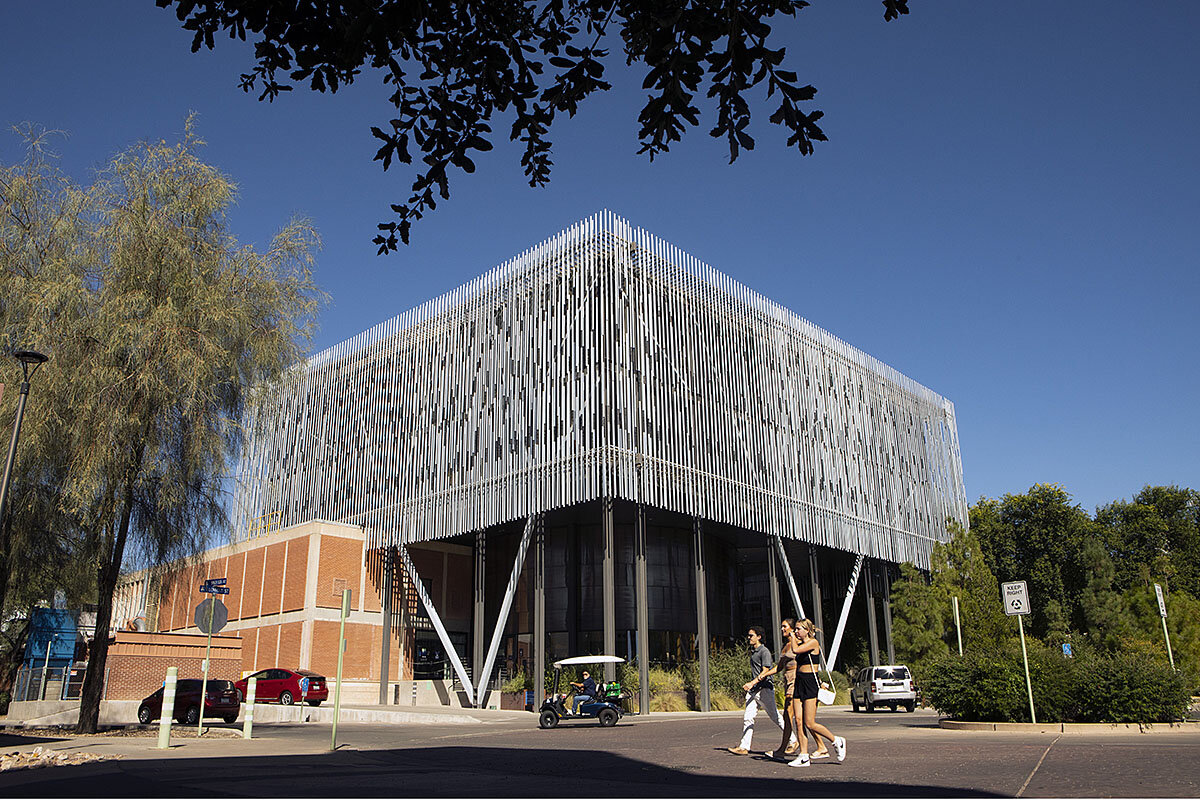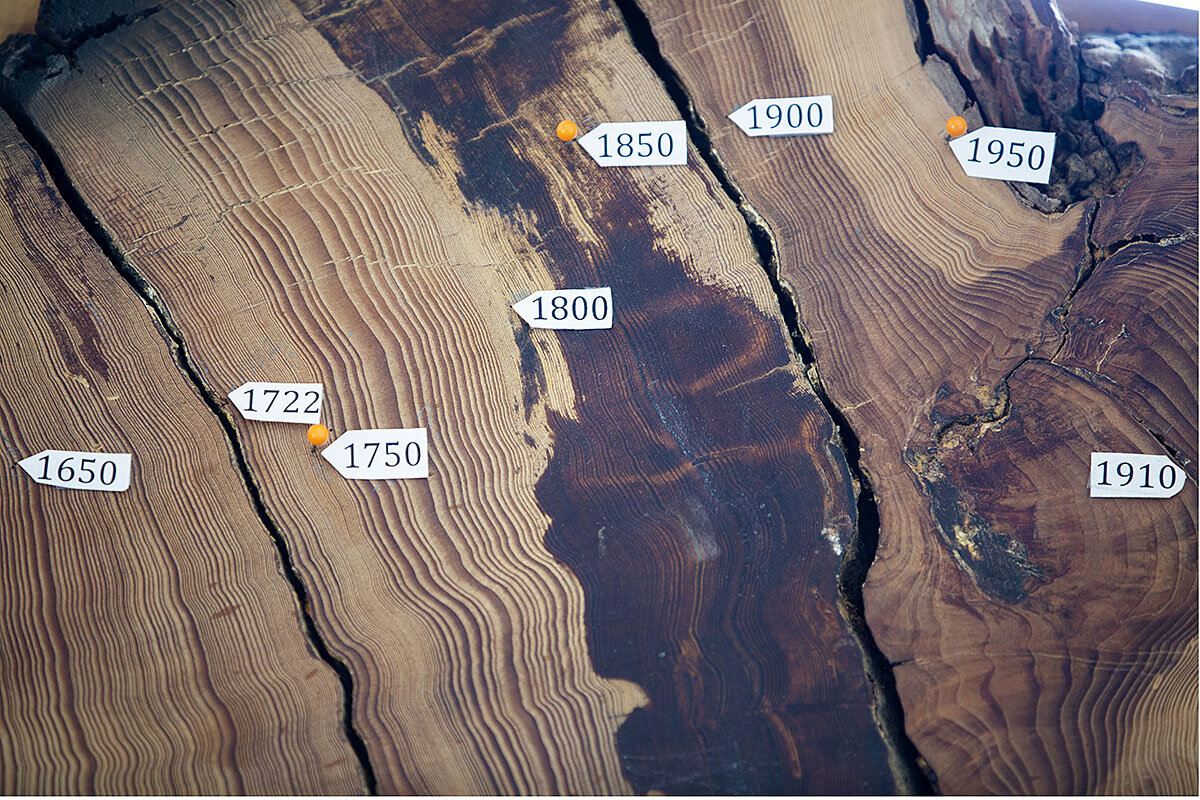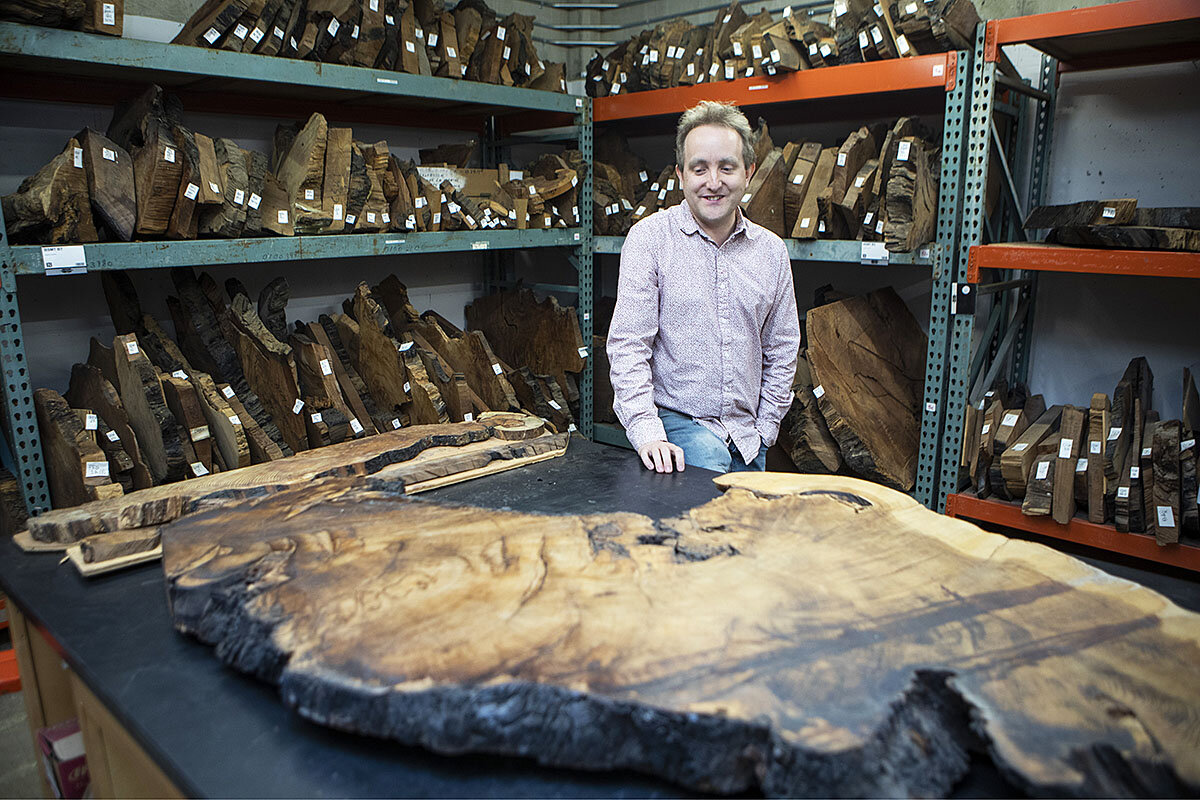The tales trees tell – from history to climate change
Loading...
| Tucson, Ariz.
For generations, essential clues to the earth‚Äôs climate sat underneath the stadium at the University of Arizona, piled into stacks and crammed into plastic bins. There were slices of ancient redwood trees, charcoal pieces from historic ruins, and carefully extracted cores from some of the oldest living trees on earth ‚Äì all holding information about fires, floods, droughts, and patterns of extreme weather.¬Ý
The scientists who studied these samples would stay home on football game nights, recalls Valerie Trouet, now a distinguished scholar at the university‚Äôs Laboratory of Tree-Ring Research. The stomping on the bleachers above them was just too loud for the delicate task of counting tree rings, or for finding the patterns that could reveal a climate timeline stretching thousands of years before the Industrial Revolution.¬Ý
Besides, there wasn’t any parking.
Why We Wrote This
As the recent COP26 summit made clear, action is needed to address climate change. But those actions must be well-informed, and tree rings, it turns out, can help with that.
But the working conditions have improved dramatically. A university curator is busy relocating those tens of thousands of wood samples into a state-of-the-art archive contained in the department‚Äôs own building, designed to evoke a treehouse on the University of Arizona‚Äôs Tucson campus. And the scientists who study tree rings ‚Äì dendrochronology, as the field is called ‚Äì are finding that their work is becoming increasingly recognized as crucial in the fight against climate change.¬Ý
“We’re really sitting on this nexus between climatology, ecology, and then human history,” says Dr. Trouet, who recently published a general audience book called “Tree Story: The History of the World Written in Rings.” “That intersection is what we need right now.”
The Laboratory of Tree-Ring Research is the world’s oldest dendrochronology lab, and still one of the most renowned. Scientists here focus on everything from dating archeological samples – their work rewrote the history of the cliff dwellers at Arizona’s Tonto National Monument, for instance – to better understanding the patterns of the jet stream, the westerly air current that influences temperatures across the globe.
They are also using their research to explain climate science to a broad lay audience.
In a field often focused on the impact of invisible airborne molecules, tree-ring research stands out for being decidedly tangible. After all, many people have counted the rings on a tree stump; elementary school children learn that each ring marks a year of a tree’s life.
But there is far more information contained in these markings.¬Ý
The stories trees tell
The width of a tree ring, scientists know, can indicate environmental stressors. A particularly dry year in the Southwest, for instance, might result in a narrower band, since the tree was not able to grow as much as it might in a wetter year. The same goes for cold in northern regions. A year with plenty of water and warmth, depending on the tree’s location, might lead to a wider ring. Wildfires leave scars in a tree’s wood; an insect infestation leaves a mark.
Sometimes, a year leaves such a notable ring that scientists are able to use it as a timeline marker. In her book, for instance, Dr. Trouet writes of recognizing at a glance the tree-ring signatures for the late 18th century in trees from California’s Sierra Nevada, which she studied. The year 1783 was narrow, 1792 was wide, 1795 was narrow, and so on. When researchers identify those signatures in multiple trees, they can connect the data and make a longer timeline.
And these timelines, reaching thousands of years into the past, help answer a central question of the modern climate change conversation:¬ÝAre the world‚Äôs temperatures, along with extreme weather events like drought and floods, part of a natural pattern, or are they caused by human behavior?
In this effort, dendrochronologists’ work is part of a larger, relatively new field called paleoclimatology, or the study of ancient climate. Whether from ice cores drilled from the Arctic ice sheet, which contains air bubbles trapped from millennia past, or the sedimentary layers in lakes and oceans, scientists are looking at natural systems to help determine the climate long before humans developed temperature-recording devices.
“We don’t have a thermometer telling us what it looked like in the 1400s,” says Kristy Dahl, senior climate scientist at the Union of Concerned Scientists. “But we do have records from earth systems, if we know how to unlock these secrets.”
To piece these global timelines together, dendrochronologists collect pencil-width samples, or cores, from trees across the world. They also investigate old wood from tree stumps or archeological sites, or even from logs preserved along riverbeds, such as bald cypress wood that sank in southern U.S. rivers.
In New York, researchers with the Tree-Ring Lab at Columbia University’s Lamont-Doherty Earth Observatory are looking for old wood used in historic city buildings to gain insight into the climatic conditions for the Northeast’s first growth forests, which were cut down generations ago. At the University of Arizona, Peter Brewer, curator of collections at the Laboratory of Tree-Ring Research, is organizing not only southwestern collections and slabs of giant sequoias, but samples of wood from across the world.
“This is a nice collection from Turkey,” he said one recent afternoon, pulling out a labeled container from his new archive. The wood in his hands was from the tomb of King Midas. “It’s central to the Aegean Greece timeline,” he explained.
And these records are clear.¬Ý
The trees’ verdict on climate change
While the earth has, indeed, gone through patterns of warmer and colder temperature – as well as megadroughts and floods – the change since humans began burning fossil fuels has been dramatic.
“Tree rings can help us at least reduce the uncertainty in what we can say about how warm it is today relative to the past, before greenhouse gas forcing was a significant issue,” says Edward Cook, director of Columbia’s Tree-Ring Lab.
Dendrochronologists share their findings on the online International Tree-Ring Data Bank, which lets other scientists use models from across the world. This is particularly important as researchers begin to push the field from location-specific insights ‚Äì the temperature history of the southwestern United States, for instance ‚Äì to more global climate systems.¬Ý
Dr. Trouet, for instance, is now investigating the variability of the jet stream, the winds in the higher atmosphere that form a border between colder Arctic air and the warmer air of the tropics. Scientists know that the jet stream is not static and that variations in where and how it flows impact climate across the northern hemisphere, such as recent “snowmageddon” events in the southern United States.
But until recently, scientists did not have much information on whether or how fluctuation in the jet stream was part of human-caused climate change. They simply hadn’t been measuring it for all that long.
“There are some aspects of anthropogenic climate change that we know quite well,” says Dr. Trouet. “We know that it’s getting warmer, we know it’s going to continue to get warmer, we know that as it gets warmer, it gets drier. ... But there are some other aspects that we don’t understand well. ... Our idea was to use tree rings to study how the jet stream has changed in the past – specifically before the Industrial Revolution, before we started putting so much CO2 into the atmosphere.”
To do this, her team has compared tree-ring records from England and the Balkans, finding patterns in those locations‚Äô comparative yearly temperatures that indicate jet stream movement. Dr. Trouet has about 800 years of data at this point, she says, and has already published findings from the past 300 years.¬Ý
Once again, the trees are pointing to significant, human-caused climate change.¬Ý
“It’s not like the jet stream is much further north now than it was in the past,” she says. “But what has happened is that there are much more extremes in its position. ... It goes much further north one summer and much further south another summer. These extremes are ... creating the extremes in the climate.”
Now, says Dr. Cook, scientists are working to learn even more from trees.
“We understand that there’s a lot more information contained in the annual tree ring,” he says, from the density of the wood to its isotopic composition. Continuing to unlock those secrets, he says, will let scientists “greatly improve and increase the amount of information we have on climate.”








